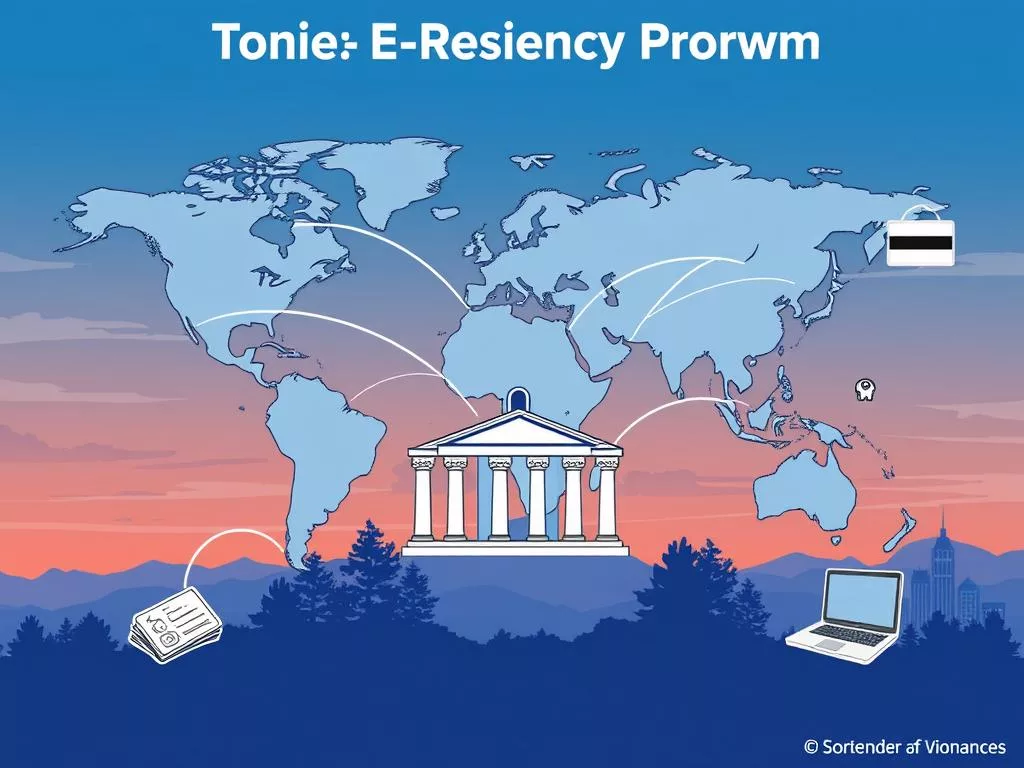For those thinking about moving to Estonia or doing business there, knowing about secure money management is key. A bank account in Estonia for non-residents is a great way to handle your money. Tallinn, the capital, is growing fast with tech, making local banking easier for everyday tasks like paying rent and bills.
Though Wise is great for international money moves, having a local account makes things simpler. Big UK banks like Barclays are closing accounts for people living abroad. This shows why Estonia is a top choice for expats, with many banks ready to help.
When you open a bank account in Estonia, whether for personal or business use, you’ll need some documents. These include proof of who you are and where you live. Some banks even let you open accounts from another country.
Popular banks like Luminor Bank, Swedbank, and SEB Pank offer services made for expats. They help with your financial needs in Estonia. For more on banking in Estonia, check out this guidance.
Understanding the Necessity of a Local Bank Account
Having a local bank account in Estonia makes managing money easier. Without one, simple tasks like paying rent or taxes can be hard. A local bank account simplifies these tasks and keeps your money safe from foreign account issues.
Using an external bank can lead to unexpected losses when converting money. For example, converting GBP to EUR might cost you extra. While you can live without an Estonian bank account, it makes life easier. You won’t face problems like signing contracts or getting paid.
Even though digital banking offers some benefits, traditional banks are more convenient. Many people use digital banking for its flexibility. But, a local account ensures your financial dealings are smooth and secure.

To learn more about opening a bank account in Estonia, check out this guide. Knowing how banking works in Estonia can improve your financial health and help you manage your money better.
Guide to Estonia Bank Account Non Resident
Opening a bank account in Estonia as a non-resident can be tough. This is because of strict Anti-Money Laundering (AML) rules. To get a bank account, you need to show you have a strong link to Estonia. This link can be through owning property, working, studying, or getting e-residency.
When opening an Estonia bank account for non-residents, you’ll need a few important documents. These include:
- Proof of identification
- Proof of address
- Evidence of a connection to Estonia
There are nine licensed banks in Estonia, but only four really help non-residents. These banks are Swedbank, SEB, Luminor, and LHV. LHV is special because it supports e-residency. This lets non-residents manage their banking from anywhere.
The fees for opening a bank account can differ a lot. For example, SEB and Swedbank charge between €300 and €750. Luminor starts at €1000. LHV is more affordable, with a €300 fee for corporate accounts and a €30 monthly fee after that.
The e-residency program has grown a lot, with over 112,700 members worldwide. It has helped more than 30,200 companies start. This shows why non-residents might want to look into banking in Estonia, whether for living, working, or investing.
Here’s a table to help you understand the banking fees and options for non-residents:
| Bank | Connection Requirement | Application Fee | Ongoing Monthly Charge | Supports E-Residency |
|---|---|---|---|---|
| SEB | Strong ties to Estonia | €300 – €750 | N/A | No |
| Swedbank | Strong ties to Estonia | €300 – €750 | N/A | No |
| Luminor | Strong ties to Estonia | €1000+ | N/A | No |
| LHV | less strict open to various connections | €300 | €30 | Yes |
By taking the right steps, non-residents can find good banking solutions in Estonia. This makes it easier to manage their money.
The E-Residency Program and Its Benefits
The Estonia e-residency program started in December 2014. It gives foreign nationals a digital identity. This lets them start businesses in Estonia from anywhere.
It has many benefits but doesn’t give you residency or citizenship. By 2020, over 100,000 people had joined. Now, about 12,000 companies use the program.
One big benefit of e-residency is opening a bank account. This makes it easier to work with the EU market from abroad. E-residents can also easily register businesses and use digital services in Estonia.
Three banks in Estonia support e-residency: SEB, Swedbank, and LHV. They help manage bank accounts.

- LHV is a popular choice among non-residents due to its modern banking practices and lower fees.
- SEB and Swedbank, though bigger, have started introducing
Choosing the Right Bank for Your Needs
Expatriates in Estonia have many bank options to choose from. Major banks like Swedbank, SEB, Luminor, and LHV are top choices for expats. They offer services for individuals, small businesses, and big companies, meeting all kinds of banking needs.
LHV Bank is known for being welcoming to non-residents. It also offers easy online banking through Estonia’s e-Residency program. Luminor, the biggest bank, serves many customers but might have higher fees than LHV. It’s important to think about your needs, like online banking, ATM fees, and account charges, when picking a bank.
It’s smart to look into different banks’ features, fees, and services. Compare traditional banks with digital services like fintech companies. This way, you can find the best option for your daily needs and financial goals in Estonia.

